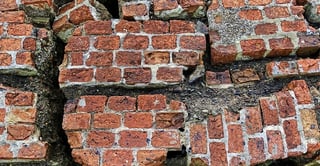 A&E firms perform many activities that qualify for the research credit, but there are some activities that qualify that building designers may not think are qualified. First, we will take a look at some of the more common activities that building designers perform that are taken as qualified activities for the R&D tax credit. Then, we will get into some of the less common activities, focused on hazard mitigation of building design, that are sometimes overlooked.
A&E firms perform many activities that qualify for the research credit, but there are some activities that qualify that building designers may not think are qualified. First, we will take a look at some of the more common activities that building designers perform that are taken as qualified activities for the R&D tax credit. Then, we will get into some of the less common activities, focused on hazard mitigation of building design, that are sometimes overlooked.
Overview of Common activities found in research credit.
With A&E firms, activities for the research credit must focus on functionality, not aesthetics. Although most projects turn out to be beautiful buildings or structures, they also need to face physical challenges like site, soil, configuration, structural issues, efficiencies, etc. Green initiatives are also a common area in design to find qualified activities. We look for LEED, energy usage analyses, special configuration and people flow, adapting to pre-existing conditions involving a variety of site layouts, wind-resistant structures, etc.
A list of some of the common activities that building designers perform that are taken into account for the research credit calculation are as follows:
- Experimentation with Natural Ventilation
- Energy Analysis of Exterior Wall Systems and Building Envelope
- Occupant Thermal Comfort Conditions
- Exterior Environmental Effects
- Design criteria for Spatial configuration
- Analysis of transient heat transfer for exterior building envelope
- Energy analysis of multiple skin wall
- Renewable energy systems performance analysis optimization
- Performance/cost analysis of PV system
- Solar Energy Design and Daylighting analysis for temp regulation
- Heat transfer and dew point analysis of exterior wall
- Analysis for heat transfer coefficient various materials of walls
- Performance and Cost analysis of photovoltaic system
- Life cycle cost analysis of building integrated photovoltaics
- Energy analysis of exterior wall design options
- Solar Hot Water System Design and Testing
These activities are great for the research credit and easily identifiable, but what are some of the activities that are not so easy to identify?
Natural disasters are a huge concern in the design of buildings, and similar to hurricanes, tornados, flooding, and other natural disasters, earthquakes are a top priority.
About half of the states and territories in the United States, comprised of more than 100 million people are exposed to risks from seismic hazards. In the U.S. alone, the average direct cost of earthquake damage is estimated at more than $1 billion dollars a year. In addition to the direct cost of earthquakes, indirect business losses are estimated to exceed $2 billion dollars a year.
Basically, designing buildings for seismic activity is a BIG DEAL. Governmental standards and building codes, which can be regional, state or local, exist pertaining to design and construction for seismic activity and mitigation. Although there are seismic standards, the code requirements define seismic zones throughout the globe and established minimum safety requirements. These are the levels that designers use as an end result benchmark, but these requirements do not tell the designers how to achieve the standard levels in a design-to-construction sense. Basically, there is a critical level of analysis in design including research, hypothesizing, modeling, testing, etc. In addition to the analysis of the design, there is also the execution of the design. The regulations don’t specify how to configure, what foundation to use, what technique to utilize, etc. Basically, building design is an iterative process of choices, based on research, in order to establish the most appropriate design and methodology to achieve the desired performance of the building given its location and environment.
This is a process called ‘Performance-Based Design’ which is the concept of designing a project for optimum performance within a given life cycle. By definition, all building programs should include the careful analysis of all physical, economical, environmental, aesthetic, and sociological factors that will result in the desirable functioning of the project. This, of course, includes hazard mitigation.
Let’s not take my word for it, let’s geek out on some real-life seismic terms. According to the National Institute of Building Sciences Glossary of Seismic Terminology, here are some technical considerations that building designers are faced with in the analysis of the design, and the execution of the design.
ANALYSIS IN DESIGN
- Input Motion - A term representing seismic forces applied to a structure.
- Modal Analysis - Determination of seismic design forces based upon the theoretical response of a structure in its several modes of vibration to excitation.
- Time Dependent Response Analysis – Study of the behavior of a structure as it responds to a specific ground motion.
- Inertial forces - Earthquake generated vibration of the building's mass causing internally generated inertial forces and building damage. Inertial forces are the product of mass times acceleration (F = m a).
- Lateral Force Coefficients - Factors applied to the weight of a structure or its parts to determine lateral force for seismic structural design.
- Equivalent Lateral Force (ELF) – The representation of earthquake forces on a building by a single static force applied at the base of a building; also referred as Base Shear (V).
- Relative Rigidity - The comparative stiffness of interconnected structural members in view of relative distribution of the horizontal force. (Only identical stiffness of interconnected members can share the total load equally.)
- Resonance - Induced oscillations of maximum amplitude produced in a physical spectrum when applied oscillatory motion and the natural oscillatory frequency of the system are the same. When the site and building periods coincide, the buildings resonate with the ground. Then the amplitude of building vibration gradually approaches infinity by time, resulting in structural failure. The ground may vibrate at a period of 0.5 to 1.0 sec. Structures may vibrate at a period of 0.1 to 6 sec.depending on the type of structure.
- Failure Mode – The manner in which a structure fails (column buckling, overturning of structure, etc).
- Soil Structure Interaction - The effects of the properties of both soil and structure upon response of the structure.
- Amplification - The period (or frequency) of the ground motion coinciding with the period of the building causing significant increase of acceleration and damage.
IMPLEMENTATION OF DESIGN
- Building Configuration – Size, shape and proportions of the building; size, shape and location of structural elements; and the type, size and location of nonstructural elements.
- Flexible System – A structural system that will sustain relatively large displacements without failure. Examples:
- 1 story structure = 0.1 sec.
- Up to 4 story structure = 0.5 sec.
- 10-20 story structure = 1 - 2 sec.
- Water tank structure = 2.5 - 6 sec.
- Large suspension bridge = 6 sec.
- Base Isolation – A method using flexible bearings, whereby a building superstructure is detached from its foundation in order to reduce earthquake forces.
- Base Shear or Equivalent Lateral Force (ELF)– Total shear force acting at the base of a structure.
- Diaphragm – Generally a horizontal member, such as a floor or roof slab, which distributes lateral forces to vertical resisting elements.
- Machine Isolators – Calibrated mountings with springs used to attenuate vibration generated by machines. For seismic locations they are modified in order to absorb lateral movement and to keep the machine or equipment upright.
There are numerous concepts and principles for seismic design of structures, including strategies for designing earthquake-resistant buildings to ensure the health, safety, and security of building occupants and assets. As for the great men and women of our country that are putting in the time for the research of the latest and greatest strategies to utilize in the design of these buildings, they need to know that these activities can increase their company’s bottom line due to increasing the amount of R&D tax credits available to the them.
For more information about research and development tax credits available in your area, find your state below.



